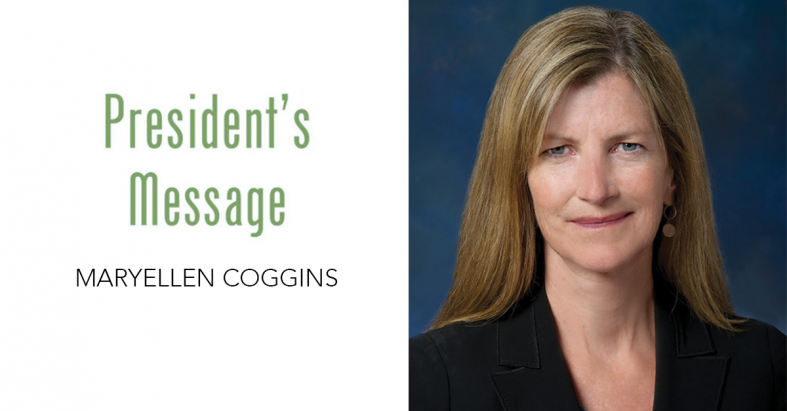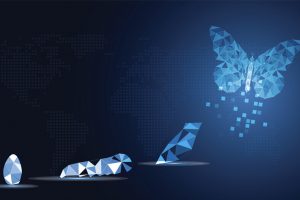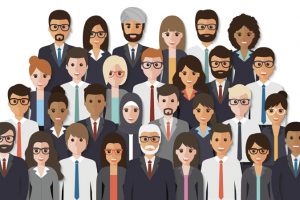By Maryellen Coggins
In my last column I wrote about renewal—the changing seasons and the coming spring, and the Academy’s own renewal with new leadership and new areas of focus for a new year. To bolster this season of renewal, one of the key elements for actuaries—the revised U.S. Qualification Standards (USQS)—replaced the previous USQS this year and apply to actuaries writing statements of actuarial opinion (SAOs) beginning next year. Our professional standards, like the seasons, continue to evolve.

Why are new standards important, including evolving requirements for continuing education (CE)? Put simply, we’re keeping up with the times. The Academy’s Board directed the Committee on Qualifications (COQ) to review and recommend appropriate changes to the USQS after the National Association of Insurance Commissioners (NAIC) amended instructions and definitions in 2019 related to the qualifications for an Appointed Actuary signing an NAIC Statement of Actuarial Opinion, Property and Casualty Annual Statement. And the new CE obligation I mentioned above? Now actuaries are required to stay current with bias training (defined broadly). This provision will ensure that the profession has the tools necessary to thrive in today’s data-first world.
And it’s not just the USQS that have been updated. The COQ has also recently updated the Frequently Asked Questions on the U.S. Qualification Standards—available online and in a downloadable PDF format—to reflect the revisions to the USQS, which affects SAOs issued on or after Jan. 1, 2023. In an Academy professionalism webinar in December following the announcement of the new USQS, Academy Immediate Past President Tom Campbell noted that as a self-regulating profession, Precept 2 of the Code of Professional Conduct, which covers qualification standards, is highly important for the profession. “Professional responsibility is part of the self-regulation,” he said. “If any one actuary fails to do this, they really risk shedding a negative light on the entire profession.” Members may also access slides and audio from that professionalism webinar, which provided valuable information.
But wait—there’s more! Actuarial standards of practice (ASOPs) also undergo constant revision and updates. As with the USQS, which considered almost 200 comment letters, ASOPs are routinely exposed for comments by the Academy’s Actuarial Standards Board (ASB). In fact, the ASB adopted six final ASOPs and approved three exposure drafts in 2021. You can find ASOPs currently in exposure status on the ASB’s website.
The ASB most recently adopted a revision of pension ASOP No. 4, Measuring Pension Obligations and Determining Pension Plan Costs or Contributions. To add more value to members, other interested parties, and stakeholders, look for an Academy-hosted webinar this spring on revised ASOP No. 4. The ASB also recently approved an exposure draft for a revision of property/casualty ASOP No. 29, Expense Provisions for Future Cost Estimates for Prospective Property/Casualty Risk Transfer and Risk Retention.
If you’re new to the profession or are just curious to know more about how the ASB operates, the ASB’s FAQs page is an excellent resource, where you can find everything from offering an idea for a new ASOP to assisting with their development. The ASB also holds occasional public meetings on important high-level topics, such as the July 2015 meeting in Washington, D.C., that looked at public pension plan policy, which I was fortunate to be part of as an ASB vice chairperson.
The creation of the ASB in the 1980s was followed by that of the Actuarial Board for Counseling and Discipline (ABCD) in 1991, which gave actuaries more resources for the support of our self-regulating profession. In addition to investigating alleged violations of professional standards and reporting back to member associations, the ABCD also includes a request for guidance mechanism, by which actuaries can seek guidance to any practice or ethics questions—in many cases, these are informal inquiries.
In our field, you can’t have too much focus on professionalism—it’s important for all actuaries, whether new to the profession or seasoned veterans, to keep up to date. All of our professionalism resources feed into the Academy’s mission of serving the public and the U.S. actuarial profession. The public appreciates—even demands—a professional approach from actuaries, as we have a vital role in providing policymakers and lawmakers alike accurate and unbiased information, as well as to remain scrupulous in our ethics, and to stay current with evolving CE requirements. After all, a strong approach to professionalism, coupled with a continued focus on evolving the role and impact of the actuarial profession in the U.S., work together to ensure actuaries continue to deliver valuable insight and advice to a variety of public stakeholders.





